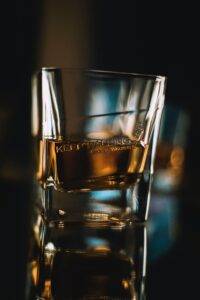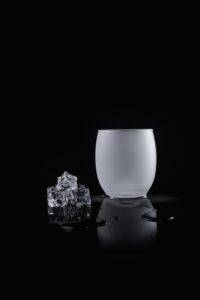Whisky is ubiquitous, more so than several other forms of liquor, as it is made worldwide. Whisky is made from fermented grain mash and can be used with different grains that are usually aged in wooden casks. But since there are so many whisky varieties, what makes a great whisky?
Types of Whisky
There are several whisky types to choose from. There is bourbon, which is usually made in Kentucky and tends to be sweeter than its counterparts. Scotch whisky is made almost exclusively in Scotland and has a sharper taste. Rye Whisky is distilled in 51% Rye and has more of a peppery flavor. These are only a few of the types of whisky out there. Each has distinct characteristics since they are made with different kinds of grain.
If the whisky is a single malt, that means that the whisky was produced by one distillery. Whisky blends, as the name suggests, are blended with another whisky and produced by multiple distilleries.
When you look at what makes each whiskey unique, you’ll find three main notes when describing a particular type: aroma, taste, and finish.
Aroma
Before whiskey reviewers even take a sip, they often smell the whisky first. This is to get a scent of the aromas (or nose) the whisky produces. Of course, each whisky is different. For aromas, a tool called the nosing wheel is used. It is sort of a spider diagram that measures what aromas a whisky emits and how potent they are. Such aromas can include nutty, citrus, apple, smoky, toffee, malty, spicy, and several others. For example, if someone smells the aromas of a Balvenie Single Malt Scotch Whisky, they may say it is quite smoky due to the scotch’s unique peat. Bourbon tends to have more caramel and vanilla notes than other varieties of whisky. Some whisky experts may advise you to swirl the glass a few times to oxidize the whisky to release some of the aromas.
Taste

You may think that aroma and taste are the same. While they do go hand-in-hand, there are a few differences. The most significant difference is that your nose picks up more flavors than your tongue. That is why there is more of an emphasis on aroma notes since you can get a better understanding of the whisky you are drinking. Each sip will likely be different. With the first sip, more often than not, you will taste the burn from the alcohol more than the flavors you are after. With the second sip, you can pick up the distinct flavors of the whisky. The third sip is where you can focus and pick up the tasting notes’ beginning, middle, and aftertaste. If you must reset your palate, take a sip of water. Like other alcoholic beverages, certain foods may enhance or taint the flavors of your drink. So you may want to get rid of whatever aftertaste you have before sipping.
Finish
When shopping for a whisky, you may have observed that several of them have an ‘age’ or were in a ‘cask.’ This is where a whisky or other forms of alcohol are matured in a particular cask. Aging is desired because it attempts to eliminate the harsh or unwanted flavors of the raw alcohol itself. This allows the barrel’s wood to give its distinct aromas and flavors to the drink. For example, The Dalmore Highland Single Malt Scotch 12 years is aged in Sherry casks for that time period, which gives the scotch a sherry-like flavor. There are several types of casks, such as bourbon, sherry, port, chardonnay, and cabernet barrels. You may find that older whiskies in specific barrel(s) are usually priced higher. That is because there is both a long process and there are several different methods. The whisky must be in a temperature-controlled environment and be sampled periodically to ensure the desired flavor is coming through. It is important to note that not all alcohol gets better with age. But more often than not, aging helps enhance the flavor, especially regarding whisky. The climate the whisky is made in has an impact as well, like Jefferson’s Ocean, which is a bourbon aged at sea aboard a ship.
Should I add water or ice?

This has been a debate amongst several whisky aficionados for a while. Some say a splash of water will enhance the aromas, while others argue it will water down the drink, thus diluting the flavor. According to Erik Wolfe at Stoll & Wolfe, adding one or two drops of water to your glass can unlock some of the hidden flavors in the drink. So, what should you do? Experimenting never hurts. Erik Wolfe also suggests that you taste the whisky without water first. When you add ice, the ice will dissolve into the drink, but there is more water in a cube of ice than in a splash. You can also buy whisky stones if you want your whisky chilled without water interfering with the taste. They are small cubes or rocks of natural stone that you store in your freezer that you add to the whisky without diluting the flavor as ice would.
This information can also help guide you to what flavors you want more of. If you like a more sweet-tasting whisky, bourbon might be the type of whisky for you. If you like spicy and want more of a bite, then rye whisky may be the one for you. And while you smell and sip, you can capture the nuances and finer details of the whisky you enjoy.
What makes a great whisky? All the fine details and flavors you find, from the aromas to the taste. But ultimately, what makes a whisky great is up to you. What you think is a great whisky does not have to be the oldest or the most expensive on the shelf. If you say Canadian Mist is a great whisky, then it is an excellent whisky for you. That’s the beauty of personal taste.
Sources:
